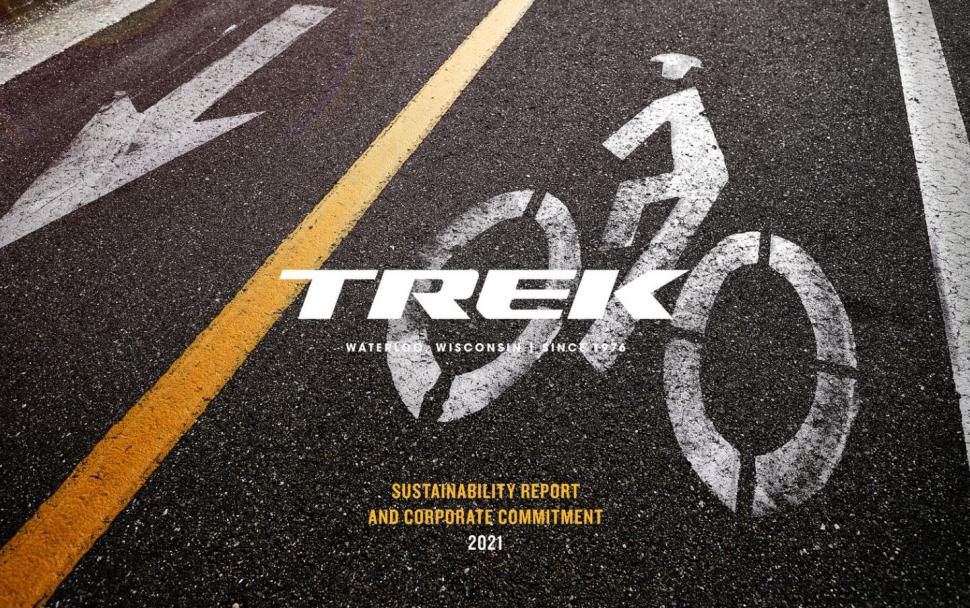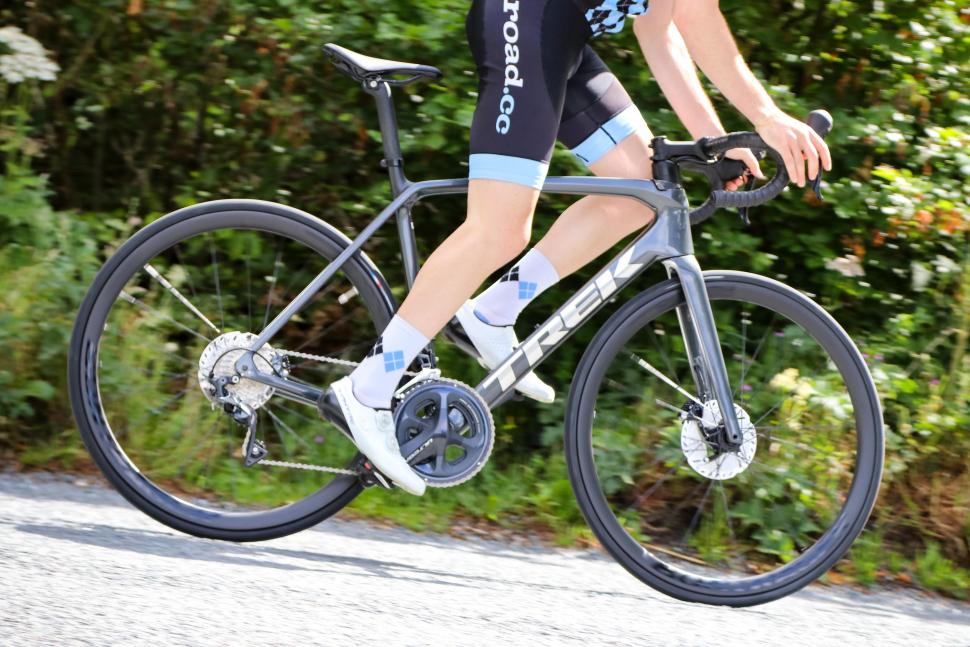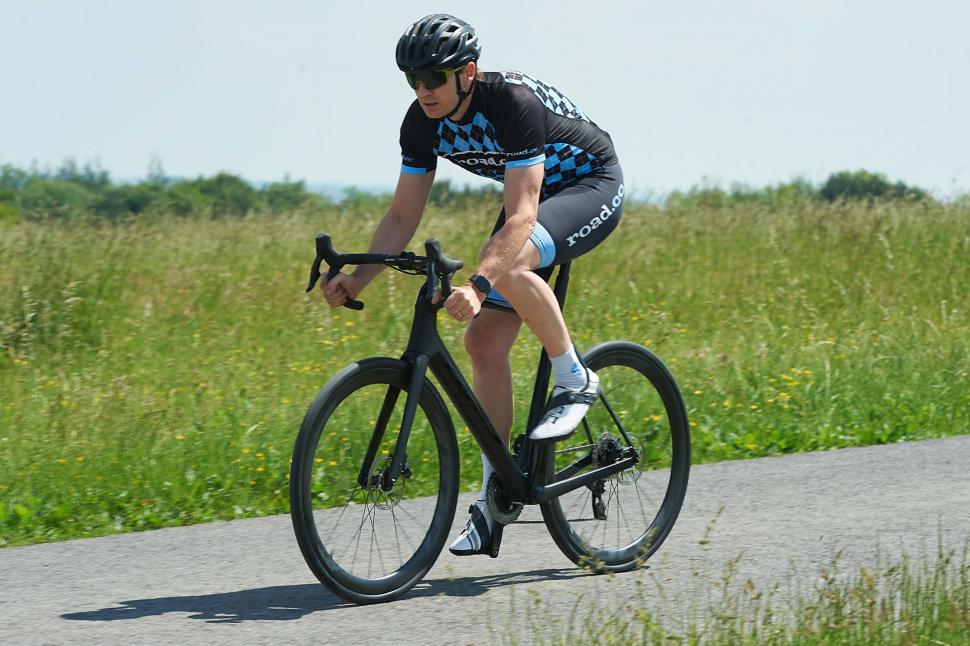- News
- Reviews
- Bikes
- Components
- Bar tape & grips
- Bottom brackets
- Brake & gear cables
- Brake & STI levers
- Brake pads & spares
- Brakes
- Cassettes & freewheels
- Chains
- Chainsets & chainrings
- Derailleurs - front
- Derailleurs - rear
- Forks
- Gear levers & shifters
- Groupsets
- Handlebars & extensions
- Headsets
- Hubs
- Inner tubes
- Pedals
- Quick releases & skewers
- Saddles
- Seatposts
- Stems
- Wheels
- Tyres
- Tubeless valves
- Accessories
- Accessories - misc
- Computer mounts
- Bags
- Bar ends
- Bike bags & cases
- Bottle cages
- Bottles
- Cameras
- Car racks
- Child seats
- Computers
- Glasses
- GPS units
- Helmets
- Lights - front
- Lights - rear
- Lights - sets
- Locks
- Mirrors
- Mudguards
- Racks
- Pumps & CO2 inflators
- Puncture kits
- Reflectives
- Smart watches
- Stands and racks
- Trailers
- Clothing
- Health, fitness and nutrition
- Tools and workshop
- Miscellaneous
- Buyers Guides
- Features
- Forum
- Recommends
- Podcast
TECH NEWS
 2021 Trek Sustainability Report.JPG
2021 Trek Sustainability Report.JPGTrek releases its first Sustainability Report outlining 10 steps to lighten its footprint
Trek has released its first-ever Sustainability Report detailing its emissions audit findings pre-2020 alongside 10 steps the brand is taking to lighten its footprint, including increasing the use of alternative materials, removing plastic waste from packaging materials as well as establishing and protecting trails as part of the new Trek Foundation.
Trek says it partnered with WAP Sustainability Consulting to conduct its first emissions audit in 2020 to better understand its environmental impact and to build a plan for its more sustainable future.
This data takes into account a single year of operation before 2020 as a baseline, Trek says, to identify its areas of greatest impact to determine where to dedicate attention and resources to reduce the carbon footprint.
One of these steps is to establish and protect new publicly accessible trails as part of its new Trek Foundation. The project aims to support the development of bicycle trails and infrastructure for public use and protect land from development.
"This world needs more people to ride bikes, and if that's going to happen, they need great places for bikes that are safe and close to home," says Trek Bicycle President John Burke.
As well as establishing the Trek Foundation, here are the other nine areas Trek is focusing on in order to reduce its footprint:
Get more people on bikes: Trek is continuing to encourage people to #GoByBike and has provided riders with a new milestone to reach carbon neutrality, with what it calls the Rule of 430.
Trek explains: “When you replace a ride in your car or an emissions-emitting vehicle for a bike trip, you are making a small contribution towards the carbon neutrality of your bike.
"If you ride a collective 430 miles – or a little over a mile a day for a year – that you would have otherwise used a vehicle for, you have saved the carbon equivalent of what it took for Trek to make your bike."
Trek claims anything above 430 miles, and your bike is now carbon negative.
Reduce use of air freight: “Air freight has 84 times the footprint of transport by ocean,” notes Trek and so it plans to improve supply chain processes to reduce air freight mileage by 75% by 2024.
Consolidate shipments to retailers: To address ground shipping emissions, Trek says it is working on a global consolidated shipping strategy by 2024. “Mainland European retailers currently utilise a batched shipping strategy that drastically cut mileage required to move product,” notes Trek.
Increase reliance on renewable energy: All Trek-owned facilities globally will be entirely powered by renewable energy by 2023, promises the brand. Currently, Trek’s global headquarters uses of mix of 60.6% wind, 33.3% biogas, and 6.1% solar power, while the California and New Jersey distribution facilities are already helping Trek towards its goal as both are 100% renewably sourced.
Reduce corporate travel: In 2021 travel has been reduced by 50% of pre-pandemic levels and Trek says it will continue to reduce plane travel.
Increase reliance on alternative materials: Trek says it is committed to using recycled, recyclable or refurbished materials to build products, expanding its current range of 15 products that are already made entirely of reclaimed materials.
For example, in partnership with Bureo, a group working to remove discarded fishing nets from the oceans, Trek is grinding down this ocean pollutant into reusable material used to create the water bottle Bat Cages as well as several handle grips.
Create zero-landfill manufacturing facilities: Landfill-free by 2024 is Trek’s goal, with efforts already in place in its US manufacturing facility.
Remove plastic waste from packaging: Trek is working towards a goal of plastic-free packaging by 2024, having already removed 433,600 lbs. of plastic from packaging in one year alone.
Increase access to bike share: Trek has had its bike-share system ByCycle in place since 2009 to help reduce congestion and transportation-based carbon emissions in 35 cities, and the plan now is to continue accelerating its growth and expansion.
Anna has been hooked on bikes ever since her youthful beginnings at Hillingdon Cycle Circuit. As an avid road and track racer, she reached the heady heights of a ProCyclingStats profile before leaving for university. Having now completed an MA in Multimedia Journalism, she’s hoping to add some (more successful) results. Although her greatest wish is for the broader acceptance of wearing funky cycling socks over the top of leg warmers.
Latest Comments
- NR23Derek 20 min 29 sec ago
The video is there now
- Rendel Harris 14 min 52 sec ago
That little pedal assist that allows people with disabilities and debilitating illnesses to use bikes instead of cars, that allows people who have...
- dubwise 50 min 59 sec ago
I wonder how many of those taking part Drive suv's
- open_roads 1 hour 27 min ago
It's great to see this sort of innovation but it's always worth reminding people who say helmets should be mandatory that most cycling fatalities...
- hawkinspeter 4 hours 2 min ago
I do indeed.
- Jakrayan 4 hours 12 min ago
The article states the toerags were youths, so unfortunately there probably won't be any real punishment. But at least the police are appealing for...
- David9694 4 hours 38 min ago
Residents awoken by car crashing into Almshouse garden...
- Circles 6 hours 29 sec ago
It would help if everyone stuck to the ' keep left, like on the road' rule - it helps our children learn


Add new comment
4 comments
Riding 430 miles instead of driving will offset the embedded CO2 in producing the bike?
Is this based on everyone driving a Hummer?
I'd love to see their calculations in working that out.
Trek are based in the US, so perhaps it is a reasonable assumption. Also are they talking about a single 430 mile journey, or they are talking about 430 single mile car trips (I gather both are very common in the US)
why does it make a difference, I doubt they are allowing reduced fuel efficiency for the first 5 minutes of any trip while the engine warms up, so probably the former. Benefits of doing this in multiple trips will be larger by a small amount.
Probably not based on an efficient vehicle doing 50mpg though based on my experience of cars in America. No need for engine turing or fancy engine control system, just use bigger cylinders to get the excessive power you want.
Much like the clothing industry, the biking industry will also need to reconcile and reform itself, with respect to the consumption culture. And constant peddling up needless upgrades, needless accessories, and making stuff in all sorts of materials to be different and more exclusive but yet of little functional difference or effective value.
Titanium bolts anyone? Exclusive detergent that will make your carbon bike levitate? Inner tubes with their own wireless chip? That is a huge environmental footprint and totally unnecessary.